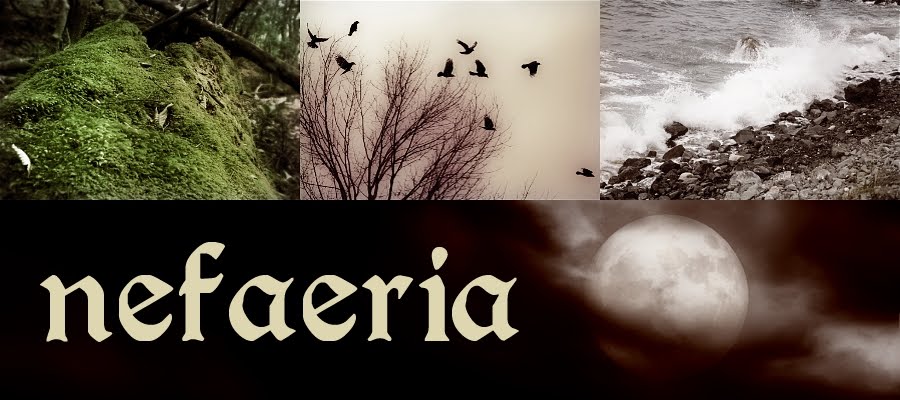{I had originally posted this over at the Unfettered Wood blog, but I figured some of the nefaeria readers might enjoy it too.}
A few days ago I did some natural dyeing, so I thought that I would share a wee bit about that in case other folks would be inspired to give it a go. Please keep in mind that there are different ways that one can dye textiles with botanicals, this is just they way that I have been comfortable with.
There are a few things that all methods have in common:
- Extracting colour
- Fixing colour
- Transferring colour
I would highly recommend people going through the resources that I will put at the end of this post to get more ideas to see what works for them.
The whole purpose of me doing this was to infuse the magical properties of the plants into the textiles, as well as obviously leave some colour on them as well.
For this batch the actual magical properties of the plants were of more importance to me than the colour. I wanted something that could be a good general purpose textile and wasn't quite sure how the colours would turn out. In one of the extra resources at the bottom of this post, there is a list of different plants and the colours they give off.
For fresh ingredients this is not necessary, but berries apparently benefit having a soaking in vinegar before simmering. This is a good time to do a blessing over the plant materials should you wish to, or to "charge" them with intent.
Using cold water is best to add for the vinegar, and after simmering giving the fabric a good rinse in cold water {water it runs clear} is needed. Other methods call for the fabric to be wet before putting it in with the dye wash, so this takes care of both the fixative and that step. Other fixatives are sometimes added to the actual dye wash or used to treat the textile afterwards. Learn more about fixative in the resources below.
Other methods call for a lower simmering time, depending on the materials being used. Sometimes fixatives, such as salt are added at this stage.
This is probably not a must, but it will make stage six a whole lot easier. As you will see in the follow photos, I did not strain all of the plant material out; some of it stuck to the fabric, which I just shook off outdoors once I was finished drying them out. I put the strained off bits into the compost.
The textile I used was a natural coloured cotton linen and I left it in the dye wash for a couple of hours. I shifted it around every once and a while with a pair of tongs. If handling, it is best to used a pair of rubber gloves so you don't dye your hands!
Before removing from the dye bath, carefully squeeze out as much of the liquid as you can. To get the concentrated veins of colours, I left my fabric bunched in a pile on a dish drying rack {made black rubber, no risk of it staining!} over night. Then I dried out flat on our clothesline.
Extra resources:Using Natural Plant Dyes by Kate Aimson {from White Dragon Magazine}
Natural Dyes: Their History and How to Make Them by Varenya
Making Natural Dyes from Plantsfrom Pioneer Thinking {has a great list of plants and the colours they give off}
*********
 |
| a comparison of my linen before dyeing {top} and after dyeing {bottom} |
It was exciting to see what the finished product would be and I am quite fond of the yellows, rusts and browns that came out in the linen. I will be using some of it in an upcoming project that I will post about later, as well as using some for charm bags and pouches.
For those who don't want to make your own, but would like some magical textiles, I will be listing some of this batch in the Unfettered Wood shop and I am happy to take custom orders.
Sláinte!
Laurel












